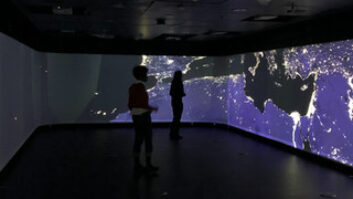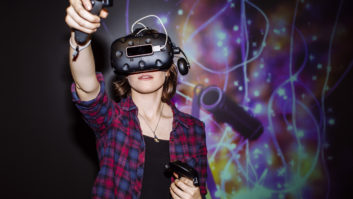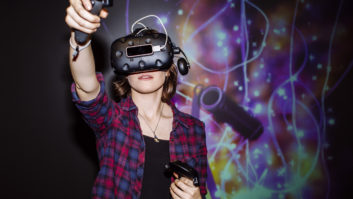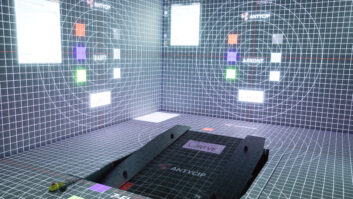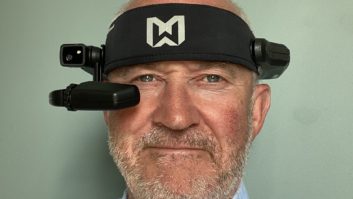In the virtual world, the acronyms have been coming through thick and fast in recent years – most prominently, virtual reality (VR), augmented reality (AR) and mixed reality (MR). So it’s undoubtedly helpful that a new term has lately emerged that serves as a catch-all for various real-and-virtual blended environments: Extended Reality, or XR.
As it implies, XR covers a lot of ground in terms of different variations and implementations of these (relatively) new technologies. And that’s no wonder when you consider how widely it has already been applied in markets as diverse as media & entertainment, medicine, education and real estate.
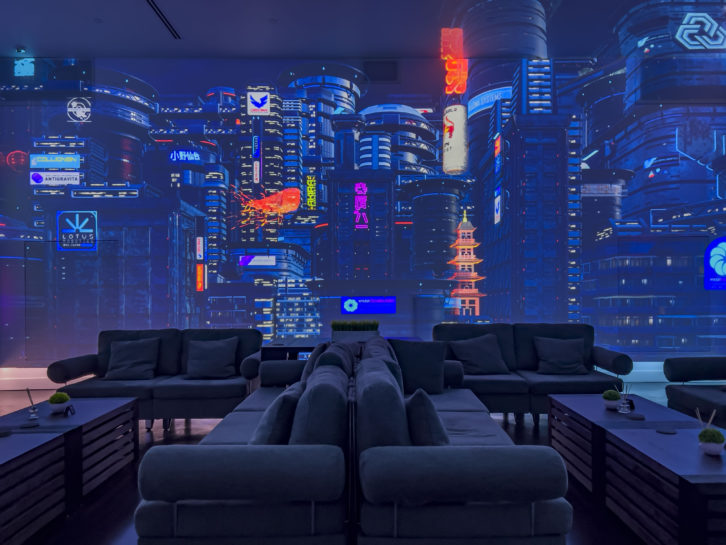 Like virtual production – which has recently been the subject of a separate feature in Installation (see September edition) – it’s also an area of technology that’s proving to be very fruitful for companies whose roots are in pro AV and installation. Both vendors and service providers are finding it to be an increasingly important source of new projects, and one that has – again like VP – offset challenges in some other verticals during the pandemic.
Like virtual production – which has recently been the subject of a separate feature in Installation (see September edition) – it’s also an area of technology that’s proving to be very fruitful for companies whose roots are in pro AV and installation. Both vendors and service providers are finding it to be an increasingly important source of new projects, and one that has – again like VP – offset challenges in some other verticals during the pandemic.
Md Rafiquzzaman is head of product development at Bangladesh-based software developer Riseup Labs. “The diverse potential of XR in terms of recreating experiences allows it to overcome restrictions [due to lockdown], so the crisis has acted as an accelerator for what was a [pre-existing trend] towards XR adoption,” he says. Looking ahead, “it’s now critical to identify the specific drivers which will help enterprises in the future.”
And with a market that is expected to expand at a compound annual growth rate of 57.91% between 2022 and 2027 (source Mordor Intelligence🙂 , there is plenty of motivation to ensure that XR is nurtured effectively.
XR vs VP
But first things first – let’s clarify some terminology. It’s still fairly early days for many of these technologies, and in particular there has been some confusion around the distinction between XR and VP. Fortunately, Lanz Short – technical solutions manager EMEA at visual experiences software developer disguise – is poised to provide a succinct summary.
“At the start of Covid I don’t think that the [distinction] had been fully defined, but we have seen that occur since then,” he says. “Typically, VP involves large curved LED walls and real floors, such as sand or grass. You are looking at needing to build real sets for that. But XR seems to have fallen more into broadcast, corporate and installation set-ups in that you have more of a cube [as your foundation], with a possible scenario involving people presenting and having content displayed on the wall to one side of them. They also have an LED floor that allows environments to be changed quickly – something that is typically required in corporate and broadcast.”
Hence it’s becoming clear that VP is more inclined towards film and long-form TV, while XR lends itself more to live applications. “With VP you tend not to use any augmented reality or what we call ‘set extension’, which is extending the LED virtually. By contrast, both AR and set extension are often used in XR – [not least because] you often have a smaller amount of LED and space to work with.”
Given these capabilities, it’s not surprising that XR appears to have broad appeal across an impressive variety of sectors. “According to the World Economic Forum, XR is one of the technologies that has the greatest potential to change the world as we know it,” says Shad Ahmed, software engineer at Riseup Labs. “Its application to business, gaming, education and healthcare may usher in a new era of personalisation and help foster innovation.”
BOOSTED DELIVERY
But whilst there might be a distinction between the two practices, it’s clear that some businesses will be looking to deliver both VP and XR projects. For instance, Paris-based VP studio Plateau Virtuel recently added XR capabilities – including set extension and real-time post processing – to its inventory thanks to a combination of SmodeTech’s compositing tool and Deltacast’s FLEX capture solution.
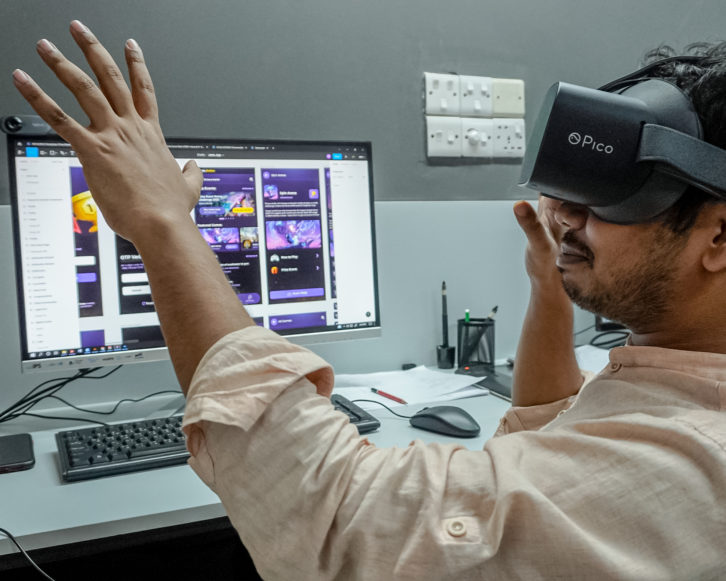 With interests that span films, advertisements and more, Plateau Virtuel shoots against LED screens using a camera equipped with a tracking system that communicates with 3D software platform Unreal Engine. The content from Unreal (3 x 4K in DisplayPort) is mixed in the SMODE xR compositing tool, with FLEX ensuring synchronisation and an end-to-end latency of only three frames.
With interests that span films, advertisements and more, Plateau Virtuel shoots against LED screens using a camera equipped with a tracking system that communicates with 3D software platform Unreal Engine. The content from Unreal (3 x 4K in DisplayPort) is mixed in the SMODE xR compositing tool, with FLEX ensuring synchronisation and an end-to-end latency of only three frames.
SmodeTech CEO Francis Maes emphasises the ability of XR to extend the set beyond physical LED screens: “With augmented reality you can integrate content in the foreground of your scenery and make it interact with the actors’ movements. And when filming beyond the LED walls, SMODE xR handles the set extension to create endless landscapes.”
Speaking on a joint Zoom call, both Maes and Deltacast head of product marketing Gérald Olivier are evidently delighted by the rapid expansion of XR, but do imply that it’s a sector which is still finding its feet. “It will take some time to stabilise and see what emerges,” says Olivier. “Production can be quite complex and difficult, and [XR] might not always be the best solution.”
Maes adds: “It will take more time [for the industry] to understand when it is a good solution – and when it’s not [suitable]. But the more that the techniques are used in the field, the more that will become clear.”
Meanwhile, while initial deployments have tended to base their connectivity needs around SDI, it’s likely that ST 2110 – the SMPTE standards suite for IP-based video – will increasingly be applied to XR projects. “Now that ST 2110 is really growing in adoption, we see that as the next step,” says Olivier.
ADVANCING RAPIDLY
With interests across a wide range of markets, Riseup Labs is well-positioned to chart the development of a technology area that it says is “advancing rapidly”. According to Rafiquzzaman, the company – whose emphasis is on creating “lifelike XR experiences” – was able to identify “underlying challenges at a strategic level before focusing on the right XR solution. To enable immersive XR experiences we are using on-device, 5G and edge cloud computing. We also guide the XR and 5G ecosystem toward a split-rendering architecture that offers an effective end-to-end solution.”
In terms of XR’s current status, Ahmed remarks: “We believe the industry is at an inflection point, and the time for businesses to act is now. XR has clear implications in the education, property/proptech, media and brand spaces, and the proliferation of XR will accelerate from improving software and hardware platforms.”
Riseup also identifies several specific trends that it thinks will increase the rate of adoption, including the increasing deployment of “gesture-based computing” – whereby the “human body interacts with digital resources without using common input devices” – and the development of an ecosystem of supporting technologies that may “help commercialise XR technologies globally by identifying great potential in the XR domain. For instance, in December 2021, Mawari, a leading XR streaming solution provider, announced that its 3DXR Content Streaming Platform for the metaverse had made its debut on the AWS Marketplace. That’s a managed and curated software catalogue from Amazon Web Services that allows customers to find, buy and immediately deploy third-party software,” says Rafiquzzaman.
It’s also likely that – as with many cutting-edge technologies – the passage of time will see prices drop. It will be welcome because, as Ahmed observes, “the installation and implementation costs of XR solutions and devices are on the high side” at present.
MARKET OUTLOOK
Nonetheless, the extent to which XR is already contributing to overall workload can be ascertained by a conversation with Lanz Short. “disguise is a platform that is used to create, imagine and deliver spectacular live experiences, and one that reaches into a lot of different verticals,” he notes. “Before Covid-19 maybe 80% [of our work] came from live shows, and the remaining 20% was VP and XR. Now, after Covid, it’s more like 70% VP/XR and 30% live. So that shows you how much things have pivoted [during the past few years].”
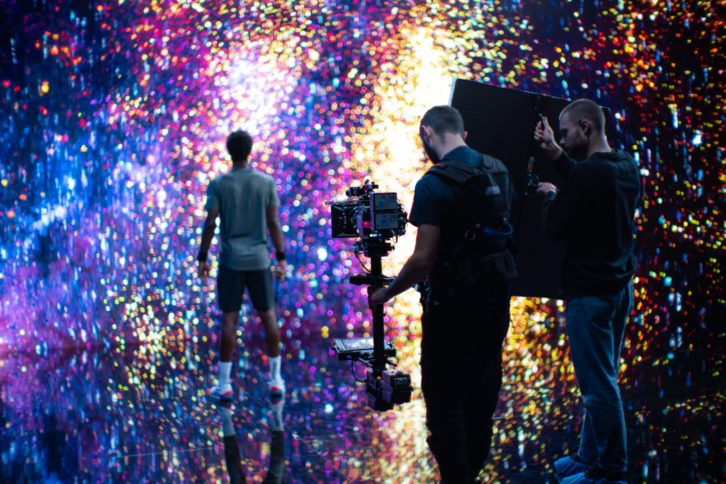 Moreover, whilst it might reasonably be expected that client ideas about using XR would incline towards the tentative at this point in time, Short indicates that is rarely the case: “People do usually come in with a fairly clear idea of what they want to do. When they speak to our solutions team and start to explore [the software] they will find all these other features that we have already that they can then use to build on top of their ideas.”
Moreover, whilst it might reasonably be expected that client ideas about using XR would incline towards the tentative at this point in time, Short indicates that is rarely the case: “People do usually come in with a fairly clear idea of what they want to do. When they speak to our solutions team and start to explore [the software] they will find all these other features that we have already that they can then use to build on top of their ideas.”
A continual focus on adding new features informs the disguise xR platform, which delivers XR experiences by “merging groundbreaking processes and new technology. xR orchestrates LED, real-time content and camera tracking to power production environments.”
In terms of the market outlook, while applications in media might have generated a lot of the headlines so far, there are plenty of signs that pro AV is on the way to becoming an enthusiastic adopter of XR. Olivier remarks: “As we traditionally come from the broadcast market, it’s very interesting for us [at Deltacast] to observe the remarkable growth that has occurred in the pro-AV market. You see a lot of people exploring the potential of this technology,” he says.
Multiple contributors allude to possibilities in various types of visitor attractions as well as conferencing, where the ability to change background and setting quickly and effectively has an obvious resonance. With remote working on the rise and the demand for immersive online meeting and conference experiences bound to increase as companies work to reduce their carbon output and costs, it seems beyond doubt that the corporate world as a whole is going to become a leading adopter of XR.
Last word to Riseup Labs’ Ahmed, who pinpoints the importance of the intersection between people and more compelling visual experiences. “One of the main driving factors for the market is the increasing demand for [technologies that can reduce] the distance between people and richer visual content,” he says. “So our expectation is that the next generation will live in these XR technologies, and we will build next-gen products and offer next-gen services to solve their everyday issues through future-focused expertise.”

